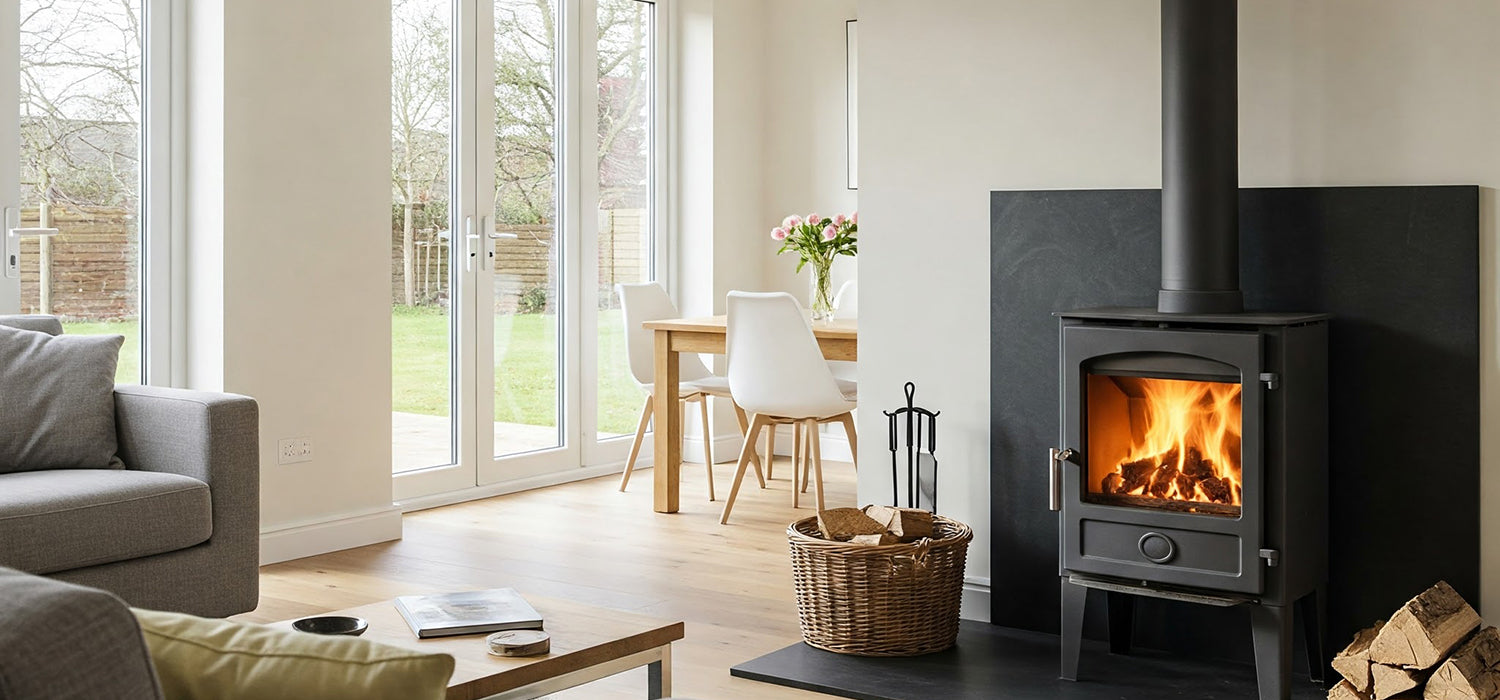
Why Your Fireplace Smells Like Burning Plastic (and What to Do About It)
Ever sat by your Log Burner and thought, “Why does it smell like melted Lego in here?”
Short answer: a burning plastic smell usually means hidden debris, overheating wires, or sneaky synthetics too close to the fire.
It’s a serious warning sign that shouldn’t be ignored. But don’t panic—this guide walks you through the dangers, quick fixes, and how to stop it happening again.
My Fireplace Smells Like Burning Plastic: A Serious Warning Sign
A roaring fire should smell of warm wood smoke, not like your bin’s just been set alight. If you catch a whiff of burning plastic, it’s a signal something’s gone wrong.
That strange, sharp smell is your nose doing you a favour. It’s telling you that something unnatural is heating up, and potentially releasing harmful fumes into your home.
So where’s it coming from? Let’s break it down.
The Immediate Danger: The Source of the Smell
When plastics burn, they don’t just stink—they release toxic chemicals like dioxins and formaldehyde. Breathing them in isn’t just unpleasant; it can irritate your lungs, sting your eyes, and cause long-term health issues if ignored.
The smell itself is the first warning sign. Something has found its way into your fire or chimney system that definitely doesn’t belong there.
Accidental Burning of Plastics
Sometimes the cause is as innocent as a stray bit of packaging. A child’s toy left too close to the hearth. Or even a synthetic Christmas stocking hung a bit too near the flames.
It only takes one plastic item to melt or ignite for your cosy evening to turn into an unpleasant—and unsafe—experience.
Think of it as your fireplace’s way of saying: “Oi! That doesn’t belong here.”
Something Trapped in the Chimney
Your chimney is another likely suspect. Over time, it can collect more than just soot.
Birds and squirrels love a good nesting spot, and sometimes their nests (with bits of plastic or insulation woven in) end up lodged inside. Even stray rubbish blown in by the wind can find its way down the flue.
When you light a fire, these foreign objects can smoulder, giving off that unmistakable burnt plastic tang.
The Risks of Burning Foreign Objects
Here’s the thing: your log burner isn’t a rubbish disposal. It’s designed for one purpose—burning clean, seasoned wood (or approved fuels).
Anything else, from plastics to painted timber, throws a spanner in the works. Not only does it give off chemical fumes, but it can also damage your flue lining and increase the risk of chimney fires.
In short—keep foreign objects out of the flames if you value both your health and your home.
What to Do Immediately
Caught that odd whiff of burning plastic? Don’t ignore it. But don’t panic either. A calm, step-by-step response is your best friend here.
Safety First: Extinguish the Fire and Ventilate
Start by putting the fire out safely. Don’t add more logs, don’t try to “burn it off”—just stop the fire where it is.
Next, open your windows and doors. Let fresh air in and give those fumes somewhere to escape. If the smell is strong, step outside until the room clears. Your lungs will thank you.
A Step-by-Step Guide to Finding the Source
Once the fire’s out and the room’s ventilated, it’s time to play detective:
-
Check inside the firebox – Look for anything unusual: plastic wrappers, synthetic fabrics, decorations, or toys.
-
Inspect the hearth and surrounding area – Anything heat-sensitive left too close? Move it out of reach.
-
Look up the chimney (safely) – If you see anything unusual or suspect something’s stuck, resist the urge to poke at it. Call a professional sweep.
-
Check nearby electrics – Wiring that runs close to your fireplace could be overheating. This is not a DIY fix—get an electrician if you’re unsure.
-
Trust your nose – If the smell lingers and you can’t find the source, it’s time to call in the experts.
A professional chimney sweep or fireplace technician can spot problems the untrained eye will miss.
A Reminder: What Never to Burn in Your Log Burner
It might be tempting to chuck in odds and ends, but resist the urge. A log burner is not a multi-purpose incinerator.
Here’s what should never make it into the flames:
-
Plastics or rubber – release toxic fumes
-
Painted or treated wood – give off harmful chemicals
-
Household rubbish – smells awful and clogs your flue
-
Synthetic fabrics – melt instead of burning cleanly
Stick to clean, seasoned wood or approved smokeless fuels. Your fireplace will thank you, your chimney will last longer, and your living room won’t smell like a factory meltdown.
A Final Word
A fireplace that smells like burning plastic isn’t just annoying—it’s dangerous. The smell is your early-warning system, and ignoring it could mean risking your health, your chimney, or even your entire home.
Act fast: extinguish the fire, ventilate, and track down the cause. If you can’t find it, get a professional to inspect your setup.
And remember—your log burner is meant to keep you warm, not double as a bin. Treat it with care, burn only the right fuel, and it’ll reward you with years of safe, crackling fires.
So next time you catch a whiff of something plastic, don’t shrug it off. Listen to your nose—it might just save your home.
Other content we think you'll love
- What Are the New Log Burner Rules in the UK?
- Why Your Log Burner is Smoking: Causes, Fixes, and Safety Tips
- Why Does My Log Burner Smell?
- Why Your Log Burner Is Burning Too Fast (And How to Fix It)
- Why Does My Log Burner Keep Smoking? Common Causes & Fixes
- Why Your Log Burner Won’t Stay Lit (and How to Fix It)
- Why Is My Log Burner Smoking? Causes, Fixes & Prevention
- Can You Safely Put a TV Above a Log Burner?
- Keeping Your Baby Safe Around Log Burners
- Can You Safely Install a Log Burner Near Glass?
- Log Burner Carbon Monoxide: Stay Safe from the Silent Killer
- Log Burner Law UK: The Complete Guide for Homeowners

